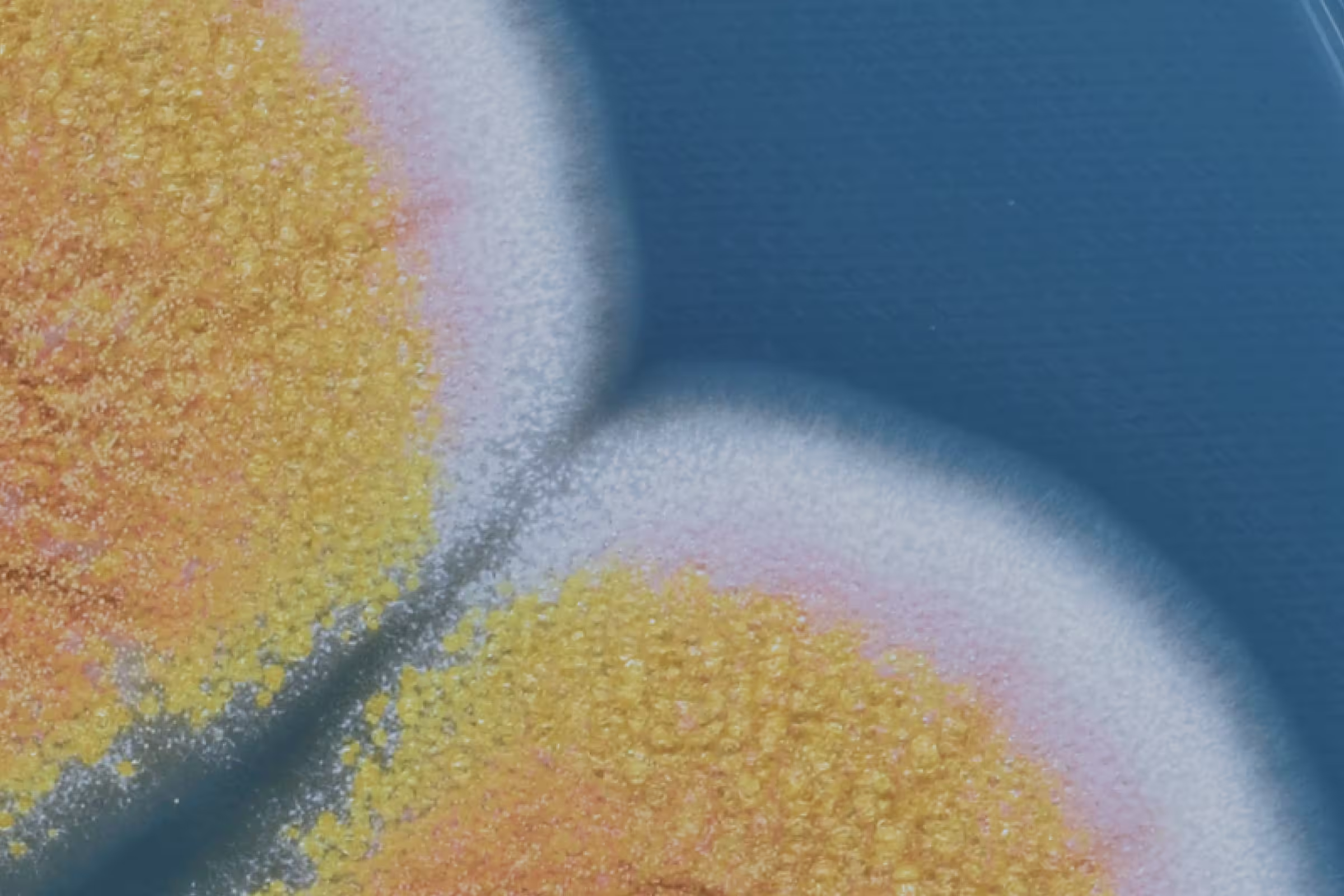

Genital Pimples vs STD: How to Spot the Difference
Learn more about which STDs can cause growths that look like pimples, plus other signs and symptoms to look out for.
Words by Olivia Cassano
Scientifically edited by Dr. Krystal Thomas-White, PhD
Medically reviewed by Dr. Sameena Rahman, MD
Getting a pimple is annoying enough when it’s on your face. Getting one on your genitals? That’ll send you down a panicked Google search rabbit hole. Although you may be surprised to find a pimple on or near your vulva, it's not that uncommon.
When your pores or hair follicles get clogged with oil and dead skin cells, it creates the perfect environment for bacteria to grow. This can lead to inflammation and, voila, a pimple is born. The skin on your vulva isn’t so different from the skin on the rest of your body, so you might notice a pimple down there from time to time.
Harmless things like contact dermatitis (a type of eczema triggered by contact with an irritant, like detergent) or folliculitis (inflammation of hair follicles, often after shaving or waxing) can cause pimples, spots, or red bumps on the vulva.
That said, there are some sexually transmitted infections (STIs) and diseases (STDs) that can cause pimple-like growths or blisters on the genitals — including genital herpes, human papillomavirus (HPV), and syphilis. These growths are not the same as the pimples that you might get on your face and usually look a little different.
Actual pimples are usually caused by clogged pores or inflamed hair follicles and are often found in areas like the face, back, or shoulders, and they typically don’t come with other symptoms like pain, itching, or unusual discharge. On the other hand, bumps caused by STDs, like herpes sores or genital warts, are often accompanied by pain, itching, or changes in appearance, and they tend to appear near the vulva, vagina, and anus.
Keep reading to learn which STDs can cause pimples, the difference between STD “pimples” and normal ones, plus other signs and symptoms to look out for.
What STD causes pimples?
More than one STI can cause unusual skin growths on the vulva and vagina.
Here's a quick reminder: STIs can be passed on during any type of sexual activity, including vaginal, anal, and even oral sex. In many cases, skin-to-skin contact is enough to spread an infection, so although they won't entirely prevent an STI, using a barrier method (condoms or dental dams) can reduce your risk.
It's also worth mentioning that many STDs cause very mild symptoms or no symptoms at all. An STI test is the only way to know for sure if you have one or not.
Below are some of the most common culprits.
Genital warts
There are over 200 different types of human papillomavirus that can infect the skin and mucous membranes in the body. Two of these types are responsible for causing genital warts.
Genital warts can appear in various forms, such as pink or flesh-colored warts that are raised, flat, or even shaped like cauliflower.
Here's an important thing to remember: you don't necessarily need to have penetrative sex to get HPV. Sexual contact is enough to spread the virus, which is why it's the most common STI in the U.S., and most of us will come into contact with it at some point in our lives. Around 80% of women will have HPV by the time they’re 50.
While there's no cure for the virus, your healthcare provider might recommend removing warts by freezing them off, applying prescription topical medication, or removing them surgically.
Genital warts can clear up on their own if your immune system clears up the virus, but they can also grow larger or multiply. It's important to treat them to reduce the risk of spreading the infection, as it's more contagious during active outbreaks.
Vaccines can also help prevent HPV. The Centers for Disease Control and Prevention (CDC) recommends HPV vaccines for people aged 9–26. The vaccine can also reduce your risk of cervical cancer, which is linked to certain strains of the virus. In 2018, the Food and Drugs Administration (FDA) approved the HPV vaccine for women up to the age of 45, so your healthcare provider may recommend getting vaccinated even if you’re over 26.
Syphilis
Syphilis symptoms can be tricky to spot at first and might be mistaken for pimples or a rash.
The first sign of syphilis is round genital sores called a chancre, which shows up on the genitals or anus. Syphilis sores can look like ingrown hair, pimples, or harmless bumps, and because they are often painless, they can go unnoticed, especially if you're not checking your vulva.
A syphilis infection is highly contagious and can easily be passed on through skin-to-skin contact during sex, so it’s really important to see your healthcare provider.
Since syphilis symptoms can be hard to spot and can come and go over time, it's best to get tested to confirm if you have it. Even if the symptoms come and go, the infection doesn't disappear without antibiotic treatment.
Genital herpes
Genital herpes is a common sexually transmitted disease caused by the HSV-2 virus. You can also get the HSV-1 virus (the one that causes cold sores) in your genital area, too. Herpes is highly contagious and can easily spread through skin-to-skin contact, especially during sex.
The most common symptoms of genital herpes are itchy or painful blisters on the vulva, anus, or thighs. They can also appear in the vagina and cervix, which means many people don't know they have herpes because the outbreak isn't always visible. The first outbreak usually lasts about two to four weeks. Genital herpes can be quite painful, and outbreaks may be accompanied by other symptoms, including fever, body aches, flu-like symptoms, and painful urination.
Unfortunately, there's no cure for herpes, but antiviral drugs can help manage and reduce the duration and discomfort of outbreaks, and also help prevent future outbreaks.

Recurrent symptoms? Get Evvy's at-home vaginal microbiome test, designed by leading OB-GYNs.
Granuloma inguinale
Granuloma inguinale (or donovanosis) is a very rare sexually transmitted infection caused by the bacteria Klebsiella granulomatis.
Usually, granuloma inguinale appears as a painless, red lump on or near the genitals, initially resembling a pimple or a skin lump. You might not notice it at first, but it can grow and eventually break down to form a sore.
If left untreated, granuloma inguinale can lead to chronic inflammation and permanent scarring of the genitals, but the good news is that it can be treated with antibiotics.
Molluscum contagiosum
Molluscum contagiosum is a skin infection that causes small, firm, fleshy bumps. They're usually painless, but they can be itchy, sore, or swollen at times.
You can get it through touching infected skin, including during sex, but you can also get it in other non-sexual ways like sharing clothes and towels — so it's not technically a sexually transmitted infection because you don't need to be sexually active to get it. In fact, it is a common infection in children between ages 1-10.
The good news is that it's not dangerous. Treatments such as creams, oral medications, and physical removal can help, but it often goes away on its own without treatment.
How long do STD pimples last?
It depends on the STD, and whether you treat it or not. For example, genital warts can take a few months to go away with treatment, while a herpes outbreak might last a few weeks. Herpes sores typically start as small, painful pimples or blisters that eventually burst and scab over. A first outbreak can last two to four weeks, but later outbreaks are usually shorter (around a week or so) especially if you start antiviral medication early.
Syphilis can also cause pimple-like sores called chancres, which are usually painless. These can last anywhere from three to six weeks and will heal on their own, but the infection stays in your body and can progress if left untreated.
Other STIs like molluscum contagiosum can cause small, raised bumps that resemble pimples. These might last for several weeks or even months, depending on your immune system and whether you get treatment.
If you notice pimple-like bumps or sores on or near your genitals, it’s important to get tested. Some STI-related bumps can be mistaken for ingrown hairs or acne, so a proper diagnosis is key. With the right treatment, many STD-related skin symptoms clear up faster and reduce the risk of spreading the infection.
Are pimples on the buttocks or thighs related to STDs?
Pimples on the buttocks or thighs can be related to STDs, but most of the time, these bumps are caused by more everyday things like clogged hair follicles (that’s called folliculitis), sweat, friction, or even irritation from tight clothing.
That being said, some STDs can certainly cause bumps or sores in those areas, especially if there’s been skin-to-skin contact during sex. For instance, herpes can lead to uncomfortable blisters or sores not only on the genitals, but also on the buttocks, thighs, or around the anus. Another example is syphilis, which may cause painless sores (chancres) depending on where contact happened. Molluscum contagiosum can also cause small, flesh-colored or white bumps that might appear there.
If you find that the bumps are itchy, painful, spreading, or sticking around for more than a couple of weeks — or if they popped up after getting a new sexual partner — see a healthcare provider. They can help figure out whether it’s something harmless or if it requires treatment.
How to avoid STD pimples
Avoiding STD-related pimples really comes down to protecting yourself from the infections that cause them. Here are a few practical ways to reduce your risk:
- Use protection: Condoms and dental dams don’t completely eliminate the risk, but they significantly reduce it by creating a barrier against skin-to-skin contact and bodily fluids, two of the main ways STIs spread.
- Get tested regularly: Some STIs don’t show symptoms right away (or ever), so regular testing is key, especially if you have new or multiple partners. Catching an infection early can help you treat it before symptoms like sores or pimples show up.
- Avoid skin-to-skin contact during outbreaks: Herpes, for example, spreads most easily during an active outbreak. If you or your partner has herpes, avoid sexual contact when sores are present, even if they’re not on the genitals.
- Communicate with partners: Honest conversations about STI status, testing history, and protection help everyone stay informed and safe.
While you can’t always prevent STIs 100%, staying aware, getting tested, and using protection can go a long way in looking after your sexual health.
When to see a healthcare provider
See your healthcare provider if you notice a bump or lump near your vulva or vagina. They can examine it and run tests to figure out whether it's caused by an STD or something else. They'll also advise on treatment and the next steps if needed.
You should see your healthcare provider especially if you have bumps or pimples on your genitals along with other symptoms, including:
- Abnormal vaginal discharge
- A strong, foul, or fishy vaginal odor
- Pelvic pain
- Bleeding between periods
- Itching and redness near the genital area
- Pain while peeing and having sex
- Swollen lymph nodes
- Fever.
FAQ
What STD causes pimples?
Genital warts, syphilis, genital herpes, granuloma inguinale, and molluscum contagiosum are some of the sexually transmitted infections that can cause bumps and blisters on the genitals. Not all genital bumps are a sign of infection, though. Contact dermatitis, folliculitis, and everyday pimples can also show up on the skin of the vulva.
How do you tell if a spot is an STD?
Telling whether a spot is from an STD can be tricky because STI-related bumps can look a lot like regular pimples, ingrown hairs, or skin irritation. But there are a few signs that might raise red flags. If the spot is painful, filled with clear fluid or pus, turns into an open sore, or shows up alongside other symptoms like itching, burning, or unusual discharge, it could be linked to an STD like herpes, syphilis, or molluscum contagiosum. Herpes sores often start as small, tender bumps or blisters that break open and crust over. Syphilis usually causes a single, painless sore. Molluscum contagiosum looks more like small, shiny, skin-colored bumps with a dimple in the center. If the spot doesn’t go away within a week or two, keeps coming back, or appears after unprotected sex or a new sexual partner, it’s smart to get checked out. Ultimately, the only way to know for sure is to see a healthcare provider. They can examine the spot, possibly test it, and tell you exactly what’s going on. Self-diagnosing can be confusing and stressful, so getting answers from a pro is always the best move.
Can chlamydia cause pimple-like bumps?
Chlamydia itself doesn’t typically cause pimple-like bumps, but it can lead to symptoms that might make you think something is off with your skin. Chlamydia often goes unnoticed because many people don't experience symptoms, but when they do appear, it's usually in the form of unusual discharge, a burning sensation when you pee, and pelvic discomfort rather than bumps.
What are skin signs of STDs?
Skin signs of STDs can vary widely depending on the infection, but several common symptoms might show up on your skin. If you're noticing unusual spots, bumps, or sores, it’s important to get tested, especially if you’ve had unprotected sex or multiple partners. Herpes typically shows up as blisters or sores around the genitals, anus, thighs, or buttocks. Syphilis starts with a painless sore (chancre) that can heal but remains contagious; later stages may lead to rashes. Warts from HPV appear as small, flesh-colored or grayish bumps that may cluster together. Molluscum contagiosum causes small flesh-colored bumps with a dimple in the center, which can spread through sexual or non-sexual contact. If you notice any unusual skin changes, especially with pain, discharge, or itching, consult a healthcare provider for evaluation and treatment.





